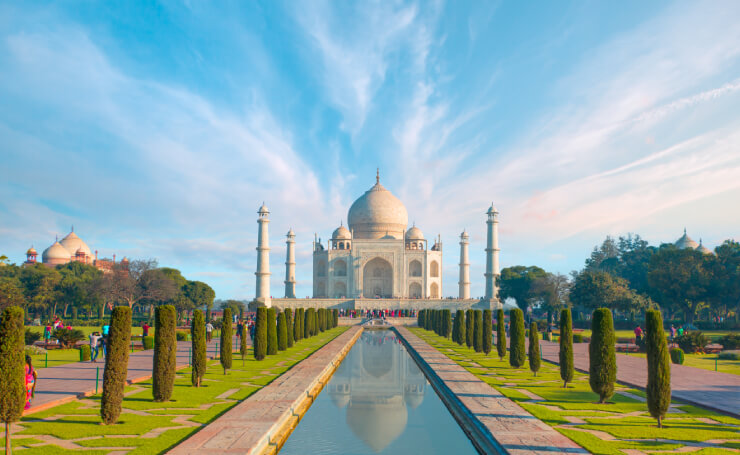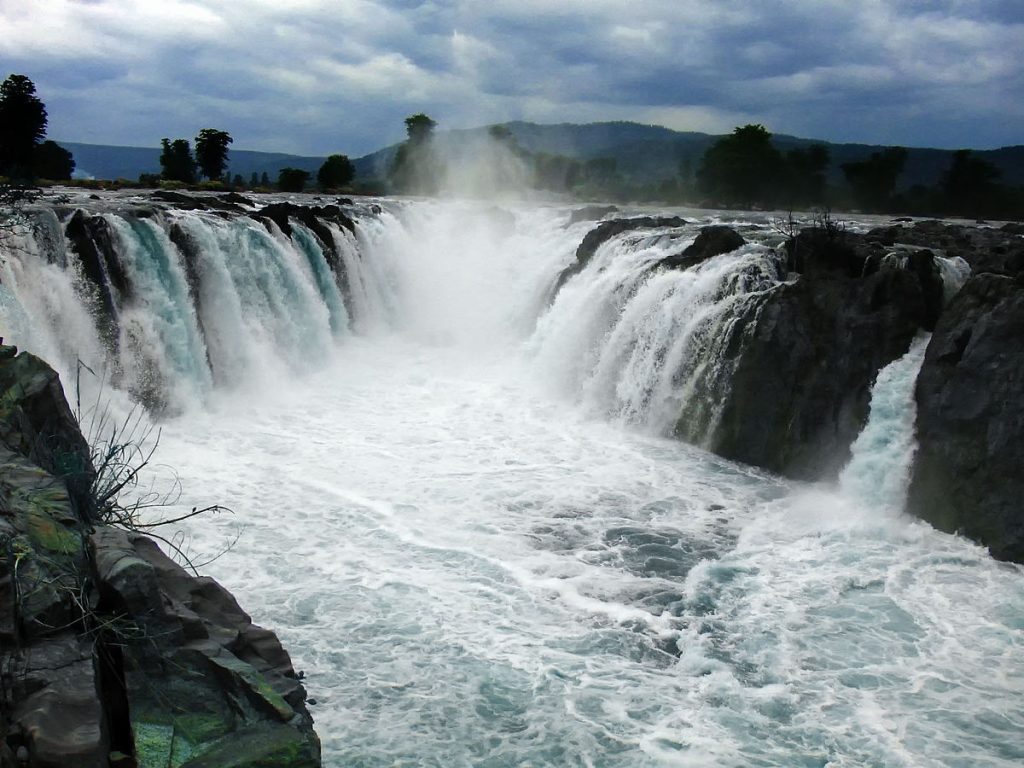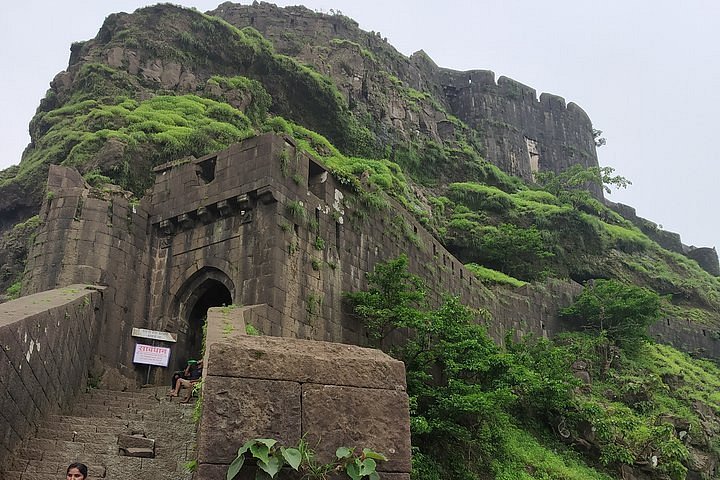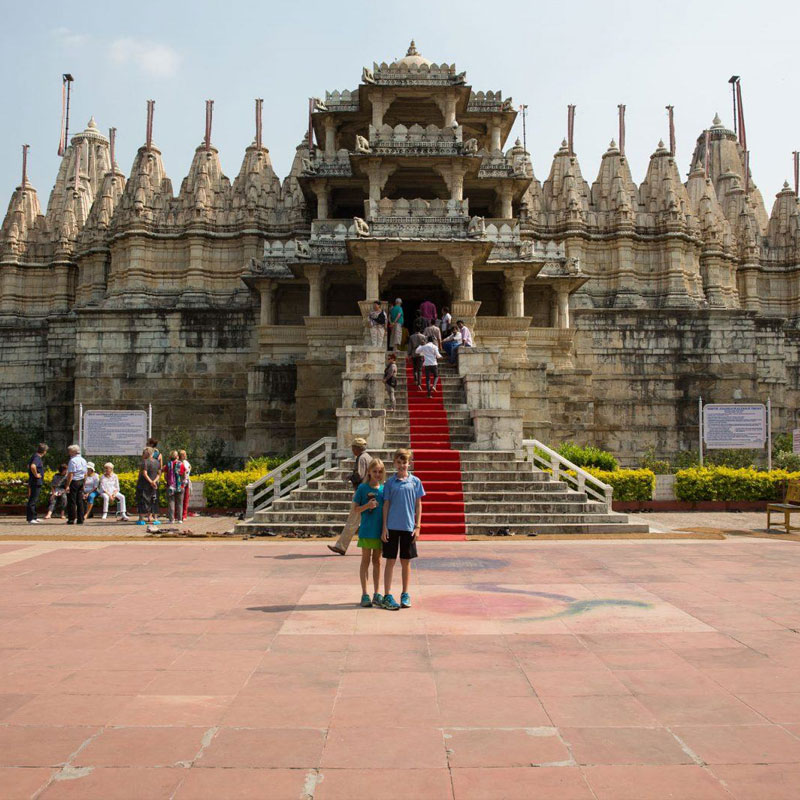India’s monuments tell stories of its vibrant history and culture. Each structure stands as a testament to the country’s diverse heritage.
From ancient temples to majestic forts, these monuments offer a glimpse into India’s past. They echo tales of emperors, warriors, and spiritual leaders. Their architecture blends with tradition, showcasing the brilliance of Indian craftsmanship. As you explore these monuments, you step back in time, witnessing the grandeur and legacy of centuries gone by.
Whether you’re a history enthusiast or a curious traveler, India’s monuments promise a captivating journey through time. Discover the artistry and stories etched in stone and marvel at the rich cultural tapestry that shapes this incredible nation. Let’s delve into the heart of India’s heritage through its iconic structures.
Taj Mahal
The Taj Mahal stands as one of India’s top monuments, showcasing its rich culture and heritage. This white marble wonder symbolizes eternal love and intricate craftsmanship.
The Taj Mahal stands as a symbol of love and beauty in India. This white marble mausoleum attracts millions of visitors each year. It is one of the most iconic monuments in the world. Built by Emperor Shah Jahan, it honors his beloved wife, Mumtaz Mahal.History And Significance
The Taj Mahal was constructed between 1632 and 1653. Shah Jahan commissioned it after the death of Mumtaz Mahal. She died during childbirth, leaving the emperor heartbroken. The Taj Mahal serves as her final resting place. It stands as a testament to eternal love. The monument also reflects the rich history of the Mughal Empire. Shah Jahan’s dedication to his wife is evident in every detail.Architectural Marvel
The Taj Mahal is a masterpiece of Mughal architecture. It features a blend of Islamic, Persian, and Indian styles. The monument’s white marble walls are inlaid with precious stones. These stones create intricate floral patterns. The central dome is 240 feet tall, surrounded by four smaller domes. Minarets frame the structure at each corner. The symmetry of the design is breathtaking. The reflecting pool enhances its beauty. The Taj Mahal’s gardens add to its serene ambiance. The craftsmanship and artistry are unmatched. Each element was carefully planned. The Taj Mahal remains a marvel of engineering and design.
Credit: www.tourmyindia.com
Red Fort
Red Fort stands as a majestic symbol of India’s rich culture and heritage. Built in the 17th century, this monument in Delhi showcases stunning Mughal architecture.
The Red Fort is one of India’s most iconic monuments. Located in the heart of Delhi, it stands as a testament to the country’s rich history and cultural heritage. This stunning fort, with its majestic red sandstone walls, has been a silent witness to centuries of history, from Mughal emperors to modern-day India.Historical Background
The Red Fort was commissioned by Emperor Shah Jahan in 1638. The construction took nearly a decade, with completion in 1648. It served as the main residence for the Mughal emperors for around 200 years. Shah Jahan shifted the capital from Agra to Delhi and built this fort as a palace for his new capital. The fort has seen numerous historical events, including the rise and fall of the Mughal Empire, British colonial rule, and India’s independence celebrations.Architectural Features
The fort is a brilliant example of Mughal architecture. Its massive walls, which extend over 2 kilometers, are made of red sandstone, giving it its name. Inside, you will find splendid structures like the Diwan-i-Aam and Diwan-i-Khas. These halls were used for public and private audiences respectively. The intricate carvings and the use of marble in some areas showcase the opulence of the Mughal era. The fort also houses the Rang Mahal, adorned with beautiful gardens and fountains. Walking through these halls, you can almost feel the grandeur of the past. Have you ever imagined what it was like to live in such luxury? The Red Fort is not just a historical site. It’s a living reminder of India’s resilience and rich heritage. Visiting this monument, you not only get a glimpse into the past but also understand the architectural brilliance that has stood the test of time.Qutub Minar
If you’re passionate about history and architecture, the Qutub Minar is a must-visit. This towering structure in Delhi is not just a marvel of ancient engineering but also a testament to India’s rich cultural heritage. As you walk around this UNESCO World Heritage Site, the sense of awe is undeniable.
Ancient Significance
The Qutub Minar stands as a symbol of the Delhi Sultanate’s power. Built in 1193 by Qutb-ud-din Aibak, it marks the beginning of Muslim rule in India. This minaret was constructed to celebrate the victory over the last Hindu kingdom.
Imagine the stories embedded in each stone. The inscriptions in Arabic tell tales of conquests and victories. It’s a direct link to a past that shaped modern India.
Have you ever wondered how many generations have gazed up at its towering height? The Qutub Minar has witnessed centuries of history unfold. Its ancient significance is palpable the moment you stand before it.
Structural Design
The Qutub Minar isn’t just tall; it’s intricately designed. Standing at 73 meters, it boasts 379 steps leading to the top. The red sandstone and marble give it a striking appearance.
Each of its five stories is marked by a balcony. The first three stories are made of red sandstone, while the fourth and fifth stories are constructed with marble and sandstone. This blend of materials adds to its visual appeal.
When you look closely, you’ll notice the minaret’s fluted design. It’s not just for show; the fluting adds structural strength. It’s a perfect blend of form and function.
How often do you come across a structure that combines beauty and engineering so seamlessly? The Qutub Minar is a prime example of ancient architectural brilliance. It’s a design that has stood the test of time, inspiring awe and admiration for centuries.

Credit: nl.pinterest.com
India Gate
India Gate stands as a symbol of India’s rich culture and heritage. This grand monument honors soldiers and reflects the nation’s history. Its impressive architecture attracts visitors from around the world.
India Gate is one of the most iconic landmarks in New Delhi, India. It’s not just a towering structure but a symbol of India’s rich history and heritage. If you’ve ever strolled along the Rajpath, you know how captivating this monument can be, especially during the evening when it’s beautifully illuminated. Let’s delve deeper into what makes India Gate so special.Memorial Importance
India Gate holds immense historical significance. Built in memory of the 70,000 Indian soldiers who lost their lives during World War I, it’s a poignant reminder of their sacrifice. Standing before this colossal structure, you can almost feel the weight of history. The names of over 13,000 soldiers are inscribed on its walls, immortalizing their bravery. It’s not just a monument; it’s a story carved in stone, making you pause and reflect on the past.Architectural Style
The architectural style of India Gate is both grand and simple. Designed by Sir Edwin Lutyens, it’s a fine example of 20th-century architecture. The 42-meter tall arch is made of red and yellow sandstone, giving it a majestic appearance. The structure’s design draws inspiration from the Arc de Triomphe in Paris, blending European and Indian elements seamlessly. When you look closely, the intricate carvings and inscriptions add layers of depth to its beauty. You can’t help but admire the craftsmanship that has stood the test of time. Have you ever visited India Gate? What was your experience like? Share your thoughts in the comments below.Hawa Mahal
Hawa Mahal in Jaipur stands as a stunning example of India’s rich culture and heritage. This palace, with its intricate lattice windows, offers a glimpse into the royal lifestyle of ancient India.
When you think of Jaipur, the vibrant Pink City of India, one monument that stands out is the Hawa Mahal. Also known as the “Palace of Winds,” this stunning five-story structure is an iconic symbol of Rajasthan’s rich culture and heritage. Built in 1799 by Maharaja Sawai Pratap Singh, Hawa Mahal is a marvel that continues to captivate visitors with its unique design and historical significance.Cultural Significance
Hawa Mahal holds a special place in the heart of Jaipur. It was constructed to allow the royal ladies to observe daily life and festivals on the streets without being seen. This reflects the purdah system prevalent in those times. The palace stands as a testament to the rich cultural ethos of Rajasthan. Every window and balcony tells a story of the bygone era. As you walk through its corridors, you can almost hear the whispers of history.Unique Architecture
Hawa Mahal’s architecture is truly one-of-a-kind. Designed by Lal Chand Ustad, the palace boasts 953 small windows, or jharokhas, each with intricate latticework. This design not only adds beauty but also keeps the palace cool during hot summers. The structure resembles a honeycomb, making it instantly recognizable. The red and pink sandstone used in its construction adds to its charm, making it a perfect spot for photography enthusiasts. Have you ever wondered what it feels like to stand behind one of those jharokhas? Imagine the cool breeze on your face as you look out over the bustling streets below. It’s an experience that connects you to the past in a way few other places can. If you haven’t visited Hawa Mahal yet, add it to your travel list. Its rich cultural significance and unique architecture promise a memorable experience.
Credit: www.pinterest.com
Mysore Palace
Mysore Palace, also known as Amba Vilas Palace, is a magnificent example of the grandeur and opulence of Indian royalty. Located in the heart of Mysore, Karnataka, it stands as a testament to the rich cultural heritage of the region. The palace draws millions of visitors each year, who come to marvel at its stunning architecture and immerse themselves in its royal history.
Royal History
The history of Mysore Palace is as fascinating as its architecture. It was originally constructed in the 14th century by the Wodeyar dynasty. However, the palace we see today was built after the old one was destroyed in a fire in 1897.
It was rebuilt in 1912 under the reign of Maharaja Krishnaraja Wadiyar IV. This new structure was designed by the British architect Henry Irwin. The palace has been the residence of the Wodeyars, who were the rulers of Mysore for over 500 years.
Walking through the halls of Mysore Palace, you can almost feel the presence of the kings and queens who once lived there. The walls are adorned with portraits of the royal family, and the rooms are filled with artifacts from their reign. Have you ever wondered what it would be like to live in such grandeur?
Architectural Grandeur
Mysore Palace is a splendid blend of Hindu, Muslim, Rajput, and Gothic architectural styles. Its façade is a striking combination of domes, turrets, arches, and colonnades, which create a breathtakingly beautiful structure.
One of the most mesmerizing features is the Ambavilasa or Diwan-e-Khas. This hall, used for private audiences, is adorned with intricately carved wooden doors, mosaic floors, and stained glass ceilings. The sheer elegance of this room will leave you spellbound.
The palace is also famous for its grand Durbar Hall. This hall, used for public gatherings, has a magnificent ceiling and a mosaic floor that sparkle under the light. The intricate designs and the sheer scale of the hall make it a sight to behold.
The palace grounds are equally impressive, with well-manicured gardens and beautiful courtyards. Don’t miss the illuminated view of the palace at night, when it is lit up with thousands of bulbs, creating a fairy-tale-like ambiance. Have you ever seen something so splendidly lit up?
Khajuraho Temples
Khajuraho Temples showcase India’s rich culture and heritage. Their intricate carvings and stunning architecture attract many visitors.
The Khajuraho Temples, located in Madhya Pradesh, India, are an architectural wonder. Built between 950 and 1050 AD, these temples are famous for their intricate carvings and sculptures. They are a UNESCO World Heritage Site, attracting visitors from all over the world.Historical Importance
The Khajuraho Temples were built by the Chandela dynasty. They represent a blend of Hindu and Jain traditions. This showcases the religious tolerance of the time. The temples were not just places of worship. They also served as centers for education and culture.Erotic Sculptures
One distinctive feature of the Khajuraho Temples is their erotic sculptures. These carvings depict various aspects of human life. They are both artistic and educational. The sculptures are often misunderstood. They are not just about sensuality. They symbolize the unity of the divine and the human. They also highlight the importance of love and passion in life.Ajanta And Ellora Caves
Ajanta and Ellora Caves showcase India’s rich cultural heritage. These ancient rock-cut caves feature impressive sculptures and intricate paintings. A visit offers a glimpse into India’s historical grandeur.
The Ajanta and Ellora Caves in Maharashtra are ancient marvels. They represent India’s rich cultural heritage. These caves are UNESCO World Heritage Sites, attracting tourists from around the globe. Ajanta Caves are famous for their beautiful paintings. Ellora Caves are known for their intricate sculptures. Both sets of caves showcase India’s glorious past.Ancient Heritage
The Ajanta and Ellora Caves date back to ancient times. Ajanta Caves were built between the 2nd century BCE and 5th century CE. Ellora Caves were constructed between the 6th and 10th centuries CE. These caves have been well preserved. They offer a glimpse into the religious and cultural practices of ancient India. Ajanta Caves were primarily Buddhist monasteries and prayer halls. They display exquisite artwork and murals. Ellora Caves feature Hindu, Buddhist, and Jain temples. This diversity reflects India’s multi-religious past. Visitors can see how spirituality influenced art and architecture.Rock-cut Architecture
The Ajanta and Ellora Caves are famous for their rock-cut architecture. Artisans carved these structures directly into the hillside. This technique required immense skill and precision. The caves exhibit elaborate carvings, statues, and pillars. Ajanta Caves have beautifully painted walls and ceilings. These paintings depict the life of Buddha and various Jataka tales. Ellora Caves boast stunning sculptures and intricate designs. The Kailasa temple at Ellora is a masterpiece of rock-cut architecture. It is the largest monolithic structure in the world. Visiting these caves is like stepping back in time. The art and architecture are awe-inspiring. They tell stories of ancient Indian civilization. These caves are a testament to the craftsmanship of Indian artisans. They are truly a treasure trove of history and culture.Frequently Asked Questions
What Is The Rich Cultural Heritage Of India?
India’s rich cultural heritage includes diverse traditions, languages, and art forms. It boasts iconic monuments like the Taj Mahal. Festivals such as Diwali and Holi showcase vibrant customs. India’s classical music, dance, and cuisine further enhance its cultural tapestry. The country’s heritage reflects centuries of history, spirituality, and creativity.
What Are The Top 10 Monuments In India?
India’s top monuments include the Taj Mahal, Red Fort, Qutub Minar, Hawa Mahal, Gateway of India, Humayun’s Tomb, Mysore Palace, Ajanta Caves, Charminar, and Victoria Memorial. These landmarks showcase India’s rich history and architectural brilliance.
What Are The Monuments Heritage Of India?
India’s heritage monuments include the Taj Mahal, Qutub Minar, Red Fort, Hampi, Khajuraho Temples, and Ajanta Caves. These sites reflect India’s rich cultural history and architectural brilliance.
Which State Of India Has Very Rich Cultural Heritage?
Rajasthan has a very rich cultural heritage. Known for its palaces, forts, and vibrant traditions, it offers a unique cultural experience.
Conclusion
India’s monuments truly showcase its rich culture and heritage. Each structure tells a unique story. Visiting these sites offers a glimpse into history. The architecture and art are breathtaking. This journey through time is unforgettable. So, plan your visit and experience India’s legacy.
Enjoy the beauty and learn about the past. Explore, discover, and cherish these incredible monuments. Your adventure awaits in the heart of India.
{ “@context”: “https://schema.org”, “@type”: “FAQPage”, “mainEntity”: [ { “@type”: “Question”, “name”: “What is the rich cultural heritage of India?”, “acceptedAnswer”: { “@type”: “Answer”, “text”: “India’s rich cultural heritage includes diverse traditions, languages, and art forms. It boasts iconic monuments like the Taj Mahal. Festivals such as Diwali and Holi showcase vibrant customs. India’s classical music, dance, and cuisine further enhance its cultural tapestry. The country’s heritage reflects centuries of history, spirituality, and creativity.” } } , { “@type”: “Question”, “name”: “What are the top 10 monuments in India?”, “acceptedAnswer”: { “@type”: “Answer”, “text”: “India’s top monuments include the Taj Mahal, Red Fort, Qutub Minar, Hawa Mahal, Gateway of India, Humayun’s Tomb, Mysore Palace, Ajanta Caves, Charminar, and Victoria Memorial. These landmarks showcase India’s rich history and architectural brilliance.” } } , { “@type”: “Question”, “name”: “What are the monuments heritage of India?”, “acceptedAnswer”: { “@type”: “Answer”, “text”: “India’s heritage monuments include the Taj Mahal, Qutub Minar, Red Fort, Hampi, Khajuraho Temples, and Ajanta Caves. These sites reflect India’s rich cultural history and architectural brilliance.” } } , { “@type”: “Question”, “name”: “Which state of India has very rich cultural heritage?”, “acceptedAnswer”: { “@type”: “Answer”, “text”: “Rajasthan has a very rich cultural heritage. Known for its palaces, forts, and vibrant traditions, it offers a unique cultural experience.” } } ] }





